Two years have passed! Like the first year, the second one was over in a blink of an eye. And how can we sum it up? It seems like even more major things happened in this last year. Walking, talking, communication, imagination… Now you see a small person, not just a helpless baby. Let’s explore the final two months of the second year and what we can expect from our toddlers.
Article Contents
1. Let’s walk, enough of carrying!2. The emergence of imagination and a new level of play
3. Of Fears and Bruises
4. Here come the molars, part 1.
If you’re still in the first year of the baby’s life, we got it covered in the first year of a child’s life section so we suggest you start there. We also got covered the whole second year, and you can check it in the second year of the child life category.
Let’s walk, enough of carrying!
We have already talked a lot about how movement is a big thing now. Mostly in a form of the relentless running all around the house without a pause. But things were quite different when we went outside. From the day our little one started to walk, in the seventeenth month, she would take a few steps and start to plead: “Mama/dada, carry!”
With time, the number of steps increased but the behavior stayed. She wanted to be carried. We did carry her, but let’s just say it is more convenient and pleasant when this 26-pound bundle of joy walks. At least for our backs.
So we used different tactics. For example, “checkpoints”. Let’s get to that crossroad and I’ll carry you over it. Let’s get to that tree and see what’s behind it. Let’s get to the bench and have a snack then… You get the picture. It worked, the only downside was it took like an hour and a half for the usual 10-minute walk. Not a big problem if in a casual walk, but if you’re in a bit of a hurry, it could be a problem.
But all of a sudden, totally unexpected, it all changed in the 23rd month. She just stopped asking to be carried. There was no difference if she was outside with dad, mom, or both of us. It was like one morning she just decided to walk and not to be carried anymore.
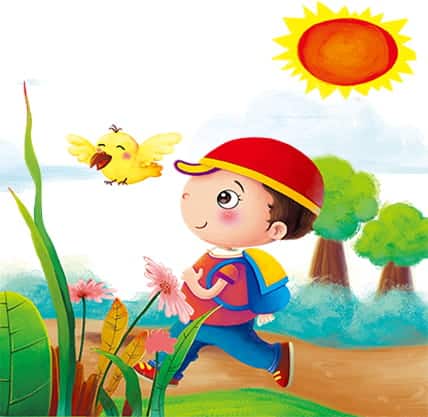
Yes, there are times when she runs to us and wants to be carried, but we noticed that’s when she gets scared of something in her environment. Like a loud noise, scary bugs, or sudden movements. Then she will run to us with her typical “Mama/dada carry!” But that is probably the only time she still requests to be carried. Of course, we still carry her in when we go on long treks, usually in a baby carrier on our back.
If someone told me how it just comes by itself, I wouldn’t believe it! But witnessing that happening literally overnight, there is no more dilemma what experts are saying all the time. “When the child is ready, it will adapt that skill or behavior.” Forcing something on the child while it is not ready won’t get us very far. It can actually result in a regression, where a child “forgets” or stops to use the skills it has already mastered.
We should always keep in mind that some children acquire certain skills sooner, and some later. And if your child is in that “later” category, try to be patient and support your child. It will do more good than “incentivizing” certain behavior. That creates stress and stress can even result in postponing the development of certain skills.
The emergence of imagination and a new level of play
Things are getting more and more interesting by the day. You probably already noticed how your toddler’s skills improve fast. But now, with 2 years, we were even caught by surprise a few times. Certain skills of our little one got a really big level up and all of a sudden, activities you are doing together are more varied and dynamic.
The most prominent change would be the development of imagination and imaginative play. Our toddler started to refer to her imagined hedgehog, fox, and mouse. She would talk about what they are doing and she is giving them to us, asks them back, etc. All through imaginative play! If you asked her to give you the hedgehog, she would make a gesture with a hand like she is giving it to you. And if you pretend to put it in your pocket, she would reach in your pocket to take him. This is a really fascinating experience considering that not long ago we were mostly doing repetitive, simple activities.
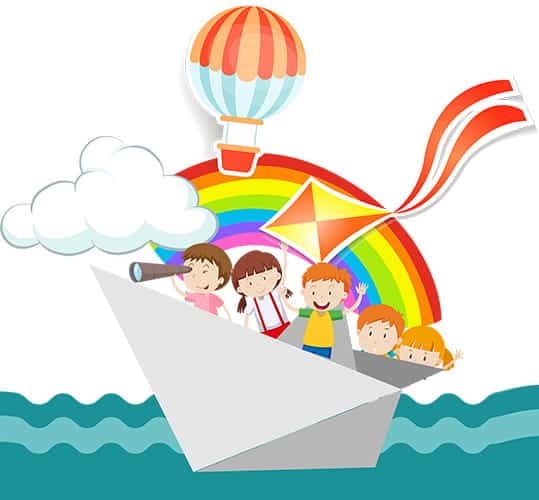
Another important and closely tied skill is a symbolic play. Symbolic play is when children use objects, actions or ideas to represent other objects, actions, or ideas as they play. It is a really important aspect of child development since it helps the child to improve communication, social interactions, and emotional regulation and develops coping mechanisms. Our little one’s favorite activity is to pretend we are different animals. So she tells us which animal we are and then we all role play with that.
Also, in this stage, it is common that children start to name things and living beings incorrectly, although they know what they are. For example, our little one loves to say for animals that they are different animals. She could say the pig is a dog or the cow is an alligator. An important thing to note here is that we shouldn’t correct them (especially if they know the right answer). That is an important part of their symbolic play and we should go along with it and maybe say something like: “An alligator? That is one interesting alligator. Can he swim fast?”
Another interesting thing that developed is the use of projections. The children are starting to project their own or someone else feelings and actions to objects or stories. Our little one would say “Panda was angry” when actually she was the one who was angry. But here we must really be careful with conclusions. Identifying projections is important to help your child cope with worries and emotions. Often, children’s imagination can mislead and they could just talk about things that are not connected to anything. So be sure to double-check if possible what the child is talking to be sure if that is a projection or just playful imagination.
Of Fears and Bruises
We had our fair share of fears already. Of loud noises, baths, beards, strangers… The nervous system is developing rapidly in this early period and it can be super aware of its environment. But recently we encountered something a little bit different. Fear of falling down and getting a bruise.
We always check when our child is hurt, but we don’t make a big fuss about it. And she usually just brushes it off and continues to play.
But something changed. We have a special “ouchy cream” that we used sometimes when she had a bump. She started to cry and ask for it for every minor scrape and even asked to go home to put it on. We begin to question is it us, do we overemphasize danger? Coddle her too much when she falls? Project our fears?

You can never be sure, but we think we are in the “normal” range. We react if she falls, but not in an overly dramatic way. Just a quick look is everything good, kiss and hugs if needed. But it’s not happening only when she falls. We noticed that she doesn’t want to be close to children who have any kind of visible injury. She just avoids them, especially if somebody talks about how they fell. We watched a Hickory Dickory song video and the moment the elephant fell down, she started to cry hysterically. Same happened with one book we read, when the little mouse fell from the scooter, she shrieked, closed the book and didn’t want to touch it for weeks.
What could it be? With improved cognitive capabilities, there are bound to be some side effects. Emotions are getting more nuanced, and fear is one of them. We don’t only fear the things at the right this moment, but also the things that could or will happen. We remember things and understand they could repeat. We anticipate events. Toddlers also now understand that they are separate beings and that their body is their own.
Temperament, recent trauma or changes in the usual routine can be a big factor in developing sudden frights. Children who are more timid, cautious and imaginative can have more and stronger fears. That explains some of it – our little one is very cautious and imaginative.
But the emergence of fears is actually a part of normal and expected development. There are even common fears for each age group. Under 2 years, children are usually scared of loud noises, strangers, separation and large objects. With the rise of imaginations, fears tend to be more dramatic: of dark, monsters, thunder, shadows, sleeping alone.
Empathy also starts to develop around this age. Children start to understand that other people have similar feelings when experiencing similar events. When somebody gets hurt, they are probably in pain and little empaths can feel that strongly.
But how to deal with these fears? Will they grow if we let them be?
Some things really don’t help, even though we say it with the best intentions. For example, explaining and explaining how something is not scary and can’t hurt us. At that moment while the child is scared.
Do you fear anything? Like a snake, a spider or maybe a button (Koumpounophobia is a real thing)? Imagine a situation in which you are in a close encounter with the object of your fear and somebody tells you ‘you don’t have to be scared, a little spider can’t hurt you!” I don’t have to be scared, but I am and nothing you say can make me feel otherwise!
Never, ever make fun of a child because they are scared of something. The only thing you could accomplish with that is that you’ll stop being a person of trust for your child. They will hide their true selves from you and show you just a censored version and avoid you as soon as they can.
Accept a child’s fear and just be there for them. Just hug them and speak with a soothing voice until they calm down. Fear is a very biological thing and makes our bodies react in a certain way.
That doesn’t mean we should avoid talking about fear or exploring how to overcome it. It just means timing and approach need to be much different. We should face our fears, but we also should be in control of that. Ask them what could help them? Investigate the object/topic together when they are calm and relaxed. Depending on the child’s age, there are plenty of choices – books, cartoons, songs, activities like drawing and making up a story. Share with your child that you are also sometimes scared and that that’s okay! But empower them with the idea that we shouldn’t get our fears to mess with the stuff we want to do. We can learn how to cope with them.
If a child fears some situation, like going to the doctor (which is a common fear), it’s good to prepare them for a visit. Explain what will the doctor do, role-play it with their stuffed animals, talk about the importance of looking after our health. Never lie, like saying the shot won’t hurt. It will hurt a little, but it will be over soon and it will help us not to get sick. We could think of some strategies for coping with that fear and pain. For example, hum a song, count or imagine some happy place.
Remember, most of these fears are developmentally appropriate and will go away with time. We can help our children by listening, supporting and validating their feelings as well as modeling and teaching them some coping mechanisms.
Here come the molars, part 1.
It’s hard to believe, but we almost forgot how painful and annoying teething can be. We had several months of the peaceful lull. But then bam! Everything came back. Drooling rivers of saliva? Check. Chewing stuff? Check. The trouble with sleeping? Check. Mood? Irritable.
Luckily, we are over the “put any and every object in the mouth” phase, but some new chewing favorites emerged. Mostly fingers and sleeves.
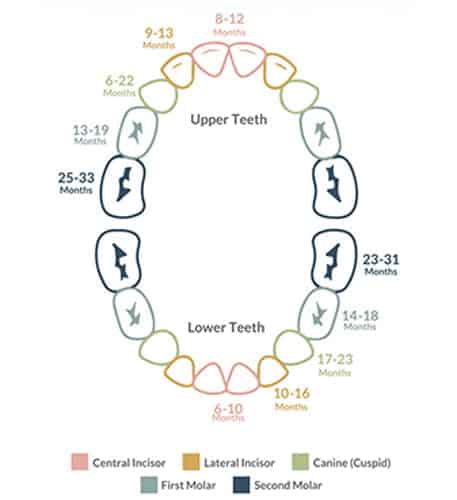
Our girl already had 16 teeth, so only four more to go. We were still waiting for the last four teeth – 2-year molars. They, as the name suggests, should appear around the second birthday. Some statistics say they usually come out between the ages of 23 and 31 months, we had to wait a bit longer for them to get out.
These molars are notorious. They can cause trouble even to children who usually don’t show any teething symptoms. And that’s not so surprising. Did you ever see molars? They are big! We use them for grinding food, so they are flat and wide.
This time, she even said that her teeth are troubling her. She said she couldn’t sleep well because of it and that she will be like a cranky Gloria (a book character) today. Yay for the communication!
She already knows we are expecting molars to pop out and doesn’t mind daily check-ups. And indeed, at the back of the mouth, gums were red and swollen. A few days later, a tooth started to emerge. First on one, then on the other side. Only lower molars though. We are still waiting for upper molars and it will probably take a few months.
We never noticed any other health issues while teething. Some say it’s possible to have a fever, even tummy ache or diarrhea caused by it. However, in the case of those symptoms, it’s more likely that the child got some other viral infection at the same time. Not unusual considering all that chewing. So, in case of any other symptoms, it’s good to always consult your child’s doctor.
And with this article, we close our experience in the second year of child life. How to recap it? Even though it got a lot easier than the first year, that doesn’t mean there are no challenges. Things in the second year get more dynamic and require a lot more energy, quick reflexes, and a sharp ear (and wit!) to handle the toddler.
Now we are looking forward to the third year of child life and dreadful temper tantrums. We expect less drastic changes so we will continue to write updates every 3 months, on a quarterly basis. So join us in exploring the first quarter of the third year, and we wish you iron patience and many calm nights with your little one.
If you’re searching for some great STEM Activities for Kids and Child development tips, you’re in the right place! Check the Categories below to find the right activity for you.

STEM Science
Videos, guides and explanations about STEM Science in a step-by-step way with materials you probably already have at your home. Find new Science ideas.
Read more
STEM Technology
Videos, guides and explanations about STEM Technology in a step-by-step way with materials you probably already have at your home. Find new Technology ideas.
Read more
STEM Engineering
Videos, guides and explanations about STEM Engineering in a step-by-step way with materials you probably already have at your home. New Engineering ideas!
Read more
STEM Math
Videos, guides and explanations about STEM Math in a step-by-step way with materials you probably already have at your home. Find new Mathematics ideas.
Read more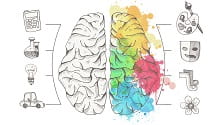
Psychology
Find out all about development psychology topics that you always wanted to know. Here are articles from child psychology and development psychology overall.
Read more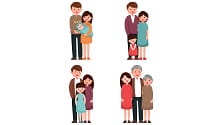
First year of Child’s Life
Following a Child’s development every month from its birth. Personal experiences and tips on how to cope with challenges that you will face in parenting.
Read more